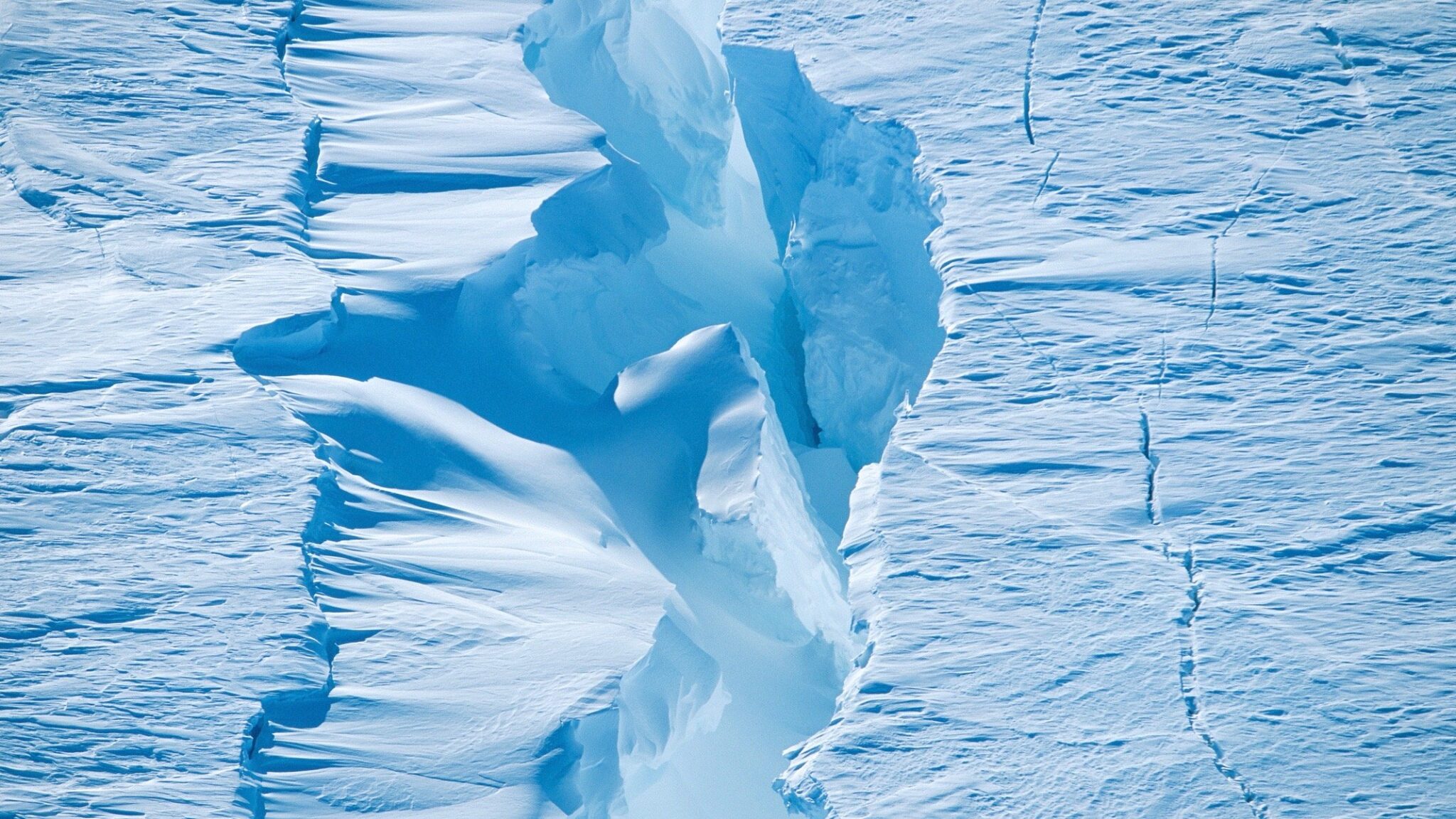
Man Swims Under East Antarctic Glacier to Highlight Impacts of the Climate Crisis

Crevasse on a glacier, Victoria Land, Antartica is seen. Endurance swimmer and climate campaigner Lewis Pugh undertook a 1 kilometer swim under one of East Antarctica's glaciers. Yann Arthus-Bertrand / Getty Images
- Endurance swimmer and UN Patron of the Oceans Lewis Pugh has completed a 1 kilometer swim under the East Antarctic ice shelf.
- The feat was part of his campaign to secure a series of protected zones in the seas around the continent.
- He chose the 200th anniversary of the discovery of Antarctica to make his epic swim.
It’s been 200 years since Russian explorer Admiral Bellingshausen discovered Antarctica. It’s a frozen wilderness, and the East of the continent is the coldest place on Earth — but scientists say they are starting to see signs of ice loss even there.
To draw attention to this plight, endurance swimmer and climate campaigner Lewis Pugh undertook a 1 kilometer swim under one of the region’s glaciers.
Braving freezing waters and a windchill factor of -15 C, he explored a river running through an ice tunnel formed as a result of the glacier melting.
And the experience was eye-opening. “Antarctica is melting,” he says. “Everywhere I looked, there was water rushing off the ice sheet, carving long ravines deep into the ice sheet, or pooling into supraglacial lakes.”
“This place needs protecting,” he adds. “It needs protecting because all our futures depend on it.”
‘The Polar Bear’
Pugh is the only person to have undertaken long-distance swims in all the world’s oceans. At 50, he’s a veteran of many icy adventures, including swimming over the North Pole during a brief break in the sea ice, and crossing a lake that formed on a glacier on Mount Everest.
He was named one of the World Economic Forum’s Young Global Leaders and in 2013 was appointed as the United Nations’ Patron of the Oceans.
His ability to withstand extreme cold has earned him the nickname of “The Polar Bear.”
Pugh’s East Antarctic swim is part of his campaign to secure a series of Marine Protected Areas around the continent. Antarctica already has one of these zones, in the Ross Sea, but Pugh wants all the seas around the continent to be designated protection areas in order to stem the effects of climate change.
He has already visited Moscow to mark the anniversary of Admiral Bellinghausen’s momentous discovery. And he plans to head to Beijing, London and Washington to persuade world leaders to increase protection for Antarctica.
- Temperatures Possible This Century Could Melt Parts of East ...
- Antarctica Just Lost a 347 Billion Ton Iceberg, but This Time the ...
- Melting Discovered in East Antarctic Region Holding Ice 'Equivalent ...
- Green Snow Is Spreading in Antarctica Due to the Climate Crisis - EcoWatch
- South Pole Warming More Than 3X Faster Than Rest of Planet, Study Finds - EcoWatch

 233k
233k  41k
41k  Subscribe
Subscribe 